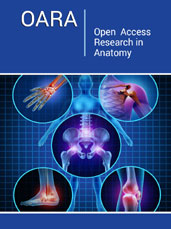- Submissions

Abstract
Perceptions in Reproductive Medicine
Development of Systematic and Active Technovigilance for Male Condoms Sold in Digital Markets
-
open or closeJanete Duarte1*, Adriana Sant’Ana da Silva1, Jarbas Emilio dos Santos1, Renata
Gracie2 and Jislaine de Fatima Guilhermino3
1National Institute for Quality Control in Health (INCQS)/Fiocruz, Brazil
2Institute of Scientific and Technological Communication and Information, (ICICT)/Fiocruz,Brazil
3Fiocruz Mato Grosso do Sul, Brazil
*Corresponding author:Janete Duarte, Oswaldo Cruz Foundation, National Institute for Quality Control in Health (INCQS)/Fiocruz, Brazil
Submission: November 04, 2024;Published: November 19, 2024

Volume6 Issue2November 19, 2024
Background: Products such as male condoms, which are made from natural rubber, must undergo
rigorous quality control before being made available to the public. In Brazil, condoms, both domestic
and imported, are compulsorily certified and their production is governed by strict criteria, which
cover everything from the quality of the latex to the specifications for primary packaging, packaging for
consumption and transportation. However, although the certification process assesses the production and
the product in detail at the end of manufacturing, it does not address the issue of after-sales service in the
various establishments, issues typical of Sanitary Surveillance actions.
Methods: Three batches of male condoms from different brands, purchased from digital marketplaces,
were evaluated. The samples were anonymously identified as (Sample A), (Sample B), and (Sample C).
A total of 288 units were purchased per batch. Based on the number of units purchased per batch, the
inflation test was performed, which assesses resistance by determining the volumetric capacity and burst
pressure. For the inflation test, we tested 200 units per brand, according to the criteria established in the
Resolution of the National Sanitary Surveillance Agency No. RDC 554/2021. In one of the samples, it was
necessary to perform the aging test, sample stability, before the insuflation test (Sample B).
Results and Conclusion: All brands met the criteria established in the Resolution of the National Sanitary
Surveillance Agency No. RDC 554/2021 for the inflation test, which allows up to seven non-compliant
units; however, non-conformities were found in all of them. We conclude that, in addition to certification,
there is a need to monitor this product in view of the health risk observed, and a systematic and active
techno vigilance system can provide a new dimension to the National Sanitary Surveillance System in
monitoring this product in digital markets.
 a Creative Commons Attribution 4.0 International License. Based on a work at www.crimsonpublishers.com.
Best viewed in
a Creative Commons Attribution 4.0 International License. Based on a work at www.crimsonpublishers.com.
Best viewed in 







.jpg)






























 Editorial Board Registrations
Editorial Board Registrations Submit your Article
Submit your Article Refer a Friend
Refer a Friend Advertise With Us
Advertise With Us
.jpg)






.jpg)














.bmp)
.jpg)
.png)
.jpg)










.jpg)






.png)

.png)



.png)






